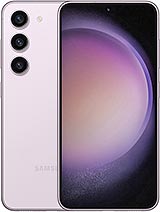Xiaomi 13T review

Flagship-grade 144Hz OLED
Xiaomi is again using the same display for its numeric T-series, which is excellent news for the cheaper vanilla 13T as it benefits from the higher-end display at a lower price. And the so-called CrystalRes AMOLED display, as Xiaomi likes to call it, is indeed flagship-worthy. It has all the bells and whistles a high-end OLED screen must have.
It measures 6.67" in diagonal, sports 1220 x 2712px resolution, supports 12-bit color depth, up to 144Hz refresh rate and the latest available HDR standards, including HDR10+ and Dolby Atmos. Those work with the appropriate content on major streaming platforms like Netflix, Prime Video, YouTube, etc.

The 144Hz refresh rate is an improvement from the previous generation as well as a step up from the competition, which usually "settles" for 120Hz panels. Additionally, the screen supports high-frequency PWM dimming at 2880Hz for those of you who have sensitive eyes and 480Hz touch sampling rate for faster responsiveness during gaming.
When it comes to brightness, the screen delivers what Xiaomi has promised in its advertising. In manual mode, the panel reached 500 nits, while in auto mode, it peaked at 1,264 nits. Xiaomi also advertises 2,600 nits of peak brightness, and we are inclined to believe it, but it's obviously available only when you are playing HDR content. In our 75% APL test, we got up to 1,200 nits, so it does have the potential for 2,600 nits in certain scenarios.
Color accuracy with the default color mode isn't amazing as the whites and grays tend to be blue-ish, but opting for the Advanced color presets (the sRGB one to be exact), can bring down the average dE2000 to just 1.5, which is an excellent result.
HRR control
The handset offers just two refresh rate modes - Default and Custom. The default one lets the system choose the most appropriate refresh rate depending on the scenario with a cap of 144Hz, while the Custom preset lets you choose between static 60Hz and 144Hz.
The Default mode is more desirable as the system switches between 30, 60, 90, 120 and 144Hz. However, the only time we saw 30Hz was on the Always-on display, while we didn't see the screen hit 144Hz in any of our testing, except for a couple of benchmarks and HRR-compatible games. So, for the most part, the system will go up to 120Hz in most apps and all of the system menus. Video players, streaming apps, Google Maps and the default Camera app, are all locked at 60Hz, though, for obvious reasons.
Battery life
The Xiaomi 13T runs on a 5,000 mAh battery, which aligns with the industry's standard and hasn't changed over the last couple of generations either. However, the new 4nm-based Dimensity 8200 SoC should, in theory, offer better efficiency. Then again, the display has changed this year, so this may also have an impact.
In our Active Use Test, the Xiaomi 13T posted average numbers for web and video use, and above average time for gaming. The Xiaomi 13T Pro and the Poco F5 offer similar times.
Expand to reveal our legacy battery test (Endurance rating). How we test now.
The results suggest there's little to no change in overall endurance, though. In fact, the Xiaomi 13T scored only 101 hours on our endurance test, which is lower than last year's 12T, mostly due to the lower web browsing runtime. This may be due to statistical error.

Our battery tests were automated thanks to SmartViser, using its viSerDevice app. The endurance rating denotes how long the battery charge will last you if you use the device for an hour of telephony, web browsing, and video playback daily. More details can be found here.
Either way, battery life isn't impressive by any means. Just like the 12T series, the 13T series leaves a bit more to be desired in terms of endurance, but it's good enough to call it "average" as most direct competitors are in the close vicinity of 100 hours endurance rating.
Video test carried out in 60Hz refresh rate mode. Web browsing test done at the display's highest refresh rate whenever possible. Refer to the respective reviews for specifics. To adjust the endurance rating formula to match your own usage patterns check out our all-time battery test results chart where you can also find all phones we've tested.
Charging speed
This year's Xiaomi 13T charging capabilities cap at 67W, down from the 120W from last year's 12T model. Perhaps Xiaomi wanted to artificially separate the two 13Ts even further, and that's why the 13T Pro retained the 120W charging.
In any case, 13T is no slouch. It was able to replenish 70% of its charge in the first 30 minutes, while the full charging cycle was complete within 51 minutes. Sure, that's still almost twice as slow as the 13T Pro, but it's still rather competitive.
Speakers
The Xiaomi 13T has a standard hybrid stereo speaker setup, with one of the speakers acting as an earpiece, while the other is downward-facing. As a result, the latter is considerably louder, as is usually the case with these setups, but the top speaker has two openings - one at the front and one at the top side of the frame.
Loudness is "Very Good" with a -25.5 LUFS score, which is a tad better than the 13T Pro, which is quite odd. We were expecting identical results.
Quality-wise, the 13T is pretty good. There is definitely some ringing of the highs and the vocals at around maximum volume, but bass, on the other hand, is quite prominent and tracks sound full overall. The Dolby Atmos tuning makes music feel a bit more "spacious" but doesn't seem to improve or deteriorate sound quality overall.
Use the Playback controls to listen to the phone sample recordings (best use headphones). We measure the average loudness of the speakers in LUFS. A lower absolute value means a louder sound. A look at the frequency response chart will tell you how far off the ideal "0db" flat line is the reproduction of the bass, treble, and mid frequencies. You can add more phones to compare how they differ. The scores and ratings are not comparable with our older loudspeaker test. Learn more about how we test here.
Reader comments
- Drie
- 27 Mar 2025
- IV$
Had my redmi note 10pro and still in good conditions until now but..... I used xiaomi 13t for 1y3m and had been problem with the phone keep starting own its on. March2025 the phone been keep restarting 3times in a month and now can't switch it o...
- JayRoar
- 27 Mar 2025
- tW7
Globally released xiaomi phones doesnt have this problem. Had many global units of xiaomi poco and redmi no problems
- Nati Segel
- 30 Oct 2024
- J20
I bought this phone after mi 11 t that broke. I am viry disappointed by this phone. The most recent os is full of serious bugs. It suddenly stopped correctly functioning. I couldn't fix the problems. I started system restore. After the restore g...









